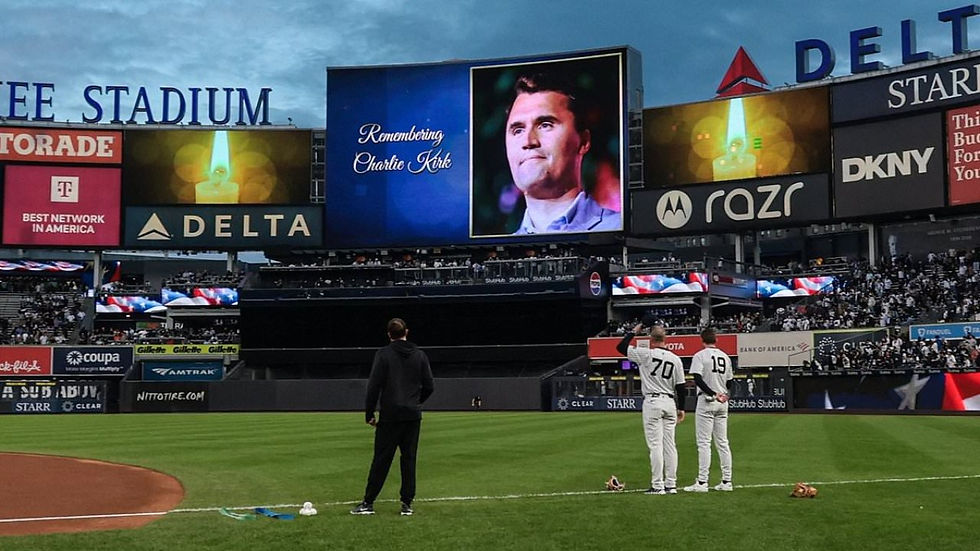Caliber Fetish: Is This a Thing? Take .30
- baronsfel001
- Jun 12, 2021
- 7 min read

I apologize upfront: there is probably a better term for this but fetish (despite its connotations) seems to best-communicate the fleeting but strong infatuation experienced and is what came to my mind. I have loved to study history my whole life and the philosophy of the .30 caliber pistol round stems from the ideas that defined the beginning of the autoloader and smokeless powder eras. Where my rational side now tells me I was going wrong is that I entertained the thought of any of these options having pertinent use for the everyday person who carries defensively.
In all fairness this is rooted in a logical mindset: with the ammo crunch of 2020-2021 having cleared some calibers off the shelves completely and inflated the prices of much of what remains is it not rational to be prepared with more options rather than fewer? Add that to the fact that some of these chamberings are now quaint yet still alive so there is some kind of place for them; a caliber is not really dead until none of the major ammo manufacturers produce for it anymore. But the lesson to be learned is this: while it is better to have too much than too little, unless you are some kind of department operating with a good budget there has to be a viable application for every choice that justifies the investment.
First thing is to geek out with the history. Like last post specific sources of information are not cited because these facts are available to look up from a variety of places online and doing so is encouraged for anyone interested in learning more (plus while I strive for accuracy I am still human and susceptible to getting things wrong). Because this covers ground less familiar to today's mainstream shooting culture I will be going into somewhat greater detail today.

Where this story begins is with German engineer Hugo Borchardt and his C-93 pistol. While the C-93 was not the first autoloader it is arguably the first autoloading trendsetter along with its 7.65x25mm bottlenecked cartridge. While bottlenecking is standard for rifle rounds to this day the only such common pistol caliber now is .357 SIG; however at the end of the 19th century it was standard for autoloading pistols as well because bottlenecking helped ensure reliable feeding in the then-new mechanisms.
For whatever reason (allegedly his own ego) Borchardt refused to improve the C-93 design himself despite the chance at a military contract. This left the door of innovation and success wide open to his contemporaries who would earn their way to firearm pioneer status: Georg Luger of Germany and John Moses Browning of America. Browning and his developments are well-known throughout the world because the guns and calibers he invented made their way everywhere for just about every purpose. It is the direction Luger took that pertains to today's story.

The above are not real Lugers nor do they belong to the author, however they perfectly-show the design variation between standard pistol and field carbine. Luger went after the military pistol contracts of Germany, Switzerland, and other clients. It was first the Swiss who first-adopted the P00 model in its design chambering 7.65x21mm Parabellum, another .30 caliber cartridge that was a shortened version of the Borchardt (and had a separate hot-loaded variant for carbine use). While the Swiss (as usual) would not fight a war with their small-caliber handguns, the German Empire anticipated troubles and loved the pistol but not the round. Luger answered this by eliminating the bottleneck and keeping a mild taper, creating the most popular handgun cartridge today: 9x19mm Parabellum.
The Parabellum chapter thus ends (or is still being written depending on how you look at it) with today's 9mm, though it is interesting to note 7.65 Parabellum, called .30 Luger in the West, was the progenitor of 9mm when typically it is the bottlenecked cartridge that is derived from its full-caliber parent. That the reverse played true in this case is an indication of the times of firearm development at the turn of the 20th century. But owning history is for the collectors: the focus of my own firearms investment is solely in defensive arms so the question will be coming back to "What practical application is there today?" Some shooters have a positive answer to that, but it starts with the other branch of development kicked-off by Borchardt.

While Luger established his own legacy, it was Paul Mauser and his C96 (a.k.a. BlasTech DL-44) that picked up where Borchardt left off. Like the Luger it chambered a variety of calibers (and was one of the few pistols ever designed for loading via stripper clip) but its flagship round was 7.63x25mm Mauser, another .30 caliber bottleneck. While the Luger in 9mm made its impression towards the west, the "broomhandle" did likewise out east. Even in its .30 caliber iteration it was more powerful than the Borchardt and esteemed for its versatility, particularly to the Russians whose standard service revolver round was 7.62x38mmR (yet another .30 caliber).

The Mauser pistol left such an impression on the Russians they tried making it their own, but their descent into communism assured little outside help on that quest. Communism being the great thief of ideas, the Soviets loaded-up the .30 Mauser round and built a Browning-like service handgun to chamber it. The TT-33 and its 7.62x25mm Tokarev round can be thought of as the penultimate application of the Borchardt concept, even if it is highly-derivative. What is certain is that .30 Tokarev is one of the most powerful service pistol rounds ever produced (in terms of raw energy) and thanks to Russian dominance of the Second World it became more popular than either of its predecessors.
It was .30 Luger, the first of the 2 Parabellum cartridges, that initially drew my interest because of the close relation with 9mm Parabellum. Its practical application seemed without question: because of the same case width and near-identical overall length, nearly anything designed to shoot 9mm can also shoot .30 Luger with just a barrel swap. In fact, this is exactly what occurred with numerous 9mm models throughout Europe as 7.65 Parabellum provided a means of having that military handgun power without running afoul of draconian European laws banning civilian use of 9mm Parabellum. It offers high velocity at lower recoil which has made it popular in competitive shooting circles. But what of personal defense?
When my infatuation wore off I realized there is too little to be offered here. Factory loadings are all full metal jacket and soft point bullets (geared towards the competition market), requiring reloading to have a chance at making a decent defensive load. There is little everyday carry application to begin with: assuming a .30 Luger barrel can be found for a particular model in the first place chances are it will be in a full-size pistol only, and anything outside this criteria will require barrel-sleeving custom work which pretty much eliminates whatever gains would be had by the fact that .30 Luger remained available and relatively-cheap during this past year's ammo crisis. Even in Europe .30 Luger is now dying, its previous civilian place and purpose having given way to 9x21mm IMI.
What .30 Luger has in compatibility it lacks in power, but what if the first part of that equation were ruled-out and its close relatives now considered? Both .30 Mauser and .30 Tokarev are longer and not so lacking in power, plus are close enough in size that .30 Mauser is generally-able to fire in .30 Tokarev weapons (not vice versa since .30 Mauser guns are not built for .30 Tokarev pressures). While Russian military doctrine did not consider pistols as viable combat weapons, .30 Tokarev really came into form as a submachine gun round.
And that is where the problems begin: what is the point of a .30 pistol caliber carbine today, particularly among civilians who cannot own full-auto and fire volume being the greatest asset a submachine gun offers? There are AR-15 barrels made to chamber both .30 Luger and .30 Tokarev, the former able to be fed through standard 9mm magazines while the latter's receiver is built to accept PPS[h] box magazines, so if one is really set to go in that direction it is possible. However this is the way I see it: what does a .30 Luger or .30 Tokarev carbine offer that is not done better by (respectively) 9x19mm or 7.62x39mm?
With the carbine application nullified then it goes back to handguns. While .30 Mauser weapons are rare and collectible today, that is actually not an issue due to the round's capability to be chambered in a .30 Tokarev weapon. The drawback of a round with such an overall length is cross-compatibility (the one problem .30 Luger does not have), meaning the only viable weapons to fire it in are those designed for it rather than conversion of a more popular model. Acquiring one is not difficult: Serbia-based Zastava Arms (who also makes a few ripoffs of the SIG Sauer P220 series) still produces Tokarev pistols in either .30 Tokarev (M57) or 9mm Parabellum (M70).
If one wants a .30 caliber bottleneck pistol the Zastava M57 is the only viable recommendation I could make. At least it (and FMJ ammo imported from the former Eastern Bloc) are inexpensive and learning to handle its stout recoil will make one look good at the range. US Marine and YouTube star Brent0331 (whom I have followed for years) seems to like the Tokarev pistol and round, though I highly-doubt it is something he would carry except to and from having fun at the firing range. Like the other "thirties" described today this round is only found in full-size handguns and carbines, and even if a custom concealed carry design was made it would have questionable application due to the loss of velocity and increase in recoil while still having a loud profile.
In conclusion, none of the classic bottlenecked .30 caliber pistol rounds would appear to have practical everyday application anymore. It should be noted however that this fact is not a strike against either the bottleneck concept or even small-caliber pistol rounds. The first point has been touched on already, the adoption of 5.7x28mm as a NATO standard (albeit designed to replace the role of 9mm submachine guns rather than any class of rifle) shows the idea is still finding military merit even if in limited application. As for the second, consider the early- to mid-20th century when the US military touted .45 ACP while on the homefront various .38 and .32 caliber rounds found homes in police and defensive handguns for many Americans; at the same time in Europe their military and police forces found Browning's .32 ACP sufficient for compact service handguns while the even-weaker .25 ACP was considered adequate by individuals (including 007 himself) for a defensive chambering. They may not have had the knockdown punch of a .45, but in the age of round nose and full metal jacket being the only bullet options these .30 caliber service pistols outpaced and outdid most all others; the .30 pistol caliber itself got perhaps its greatest application in the American .30 Carbine before intermediate-caliber rifles brought the age of viability for small-bore high-velocity pistol caliber carbines to a close. Advances in ballistics and bullet technology have left these classics behind, but if the development of such rounds as .22 TCM is any indication there seems to still be plenty of room left for the idea to grow.





Comments